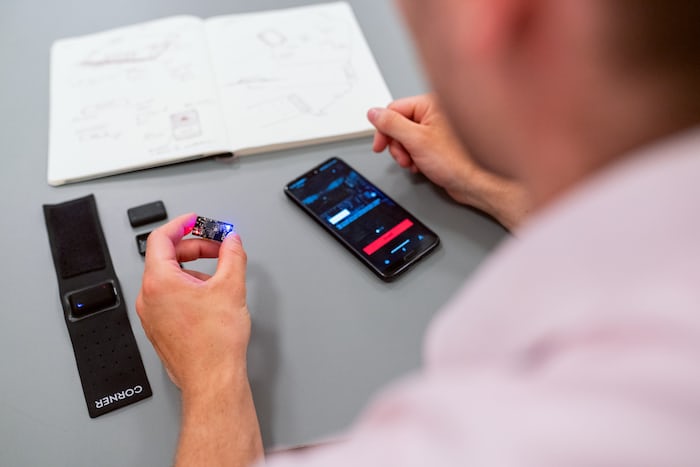Japan introduces “cute” and “lovable” robots to deliver and serve beverages and other light items.
Self-driving robots that look “humble,” “cute,” and “lovable” have been introduced in Japan to deliver food and drinks to local neighborhoods. According to authorities, they were made to look cute for Japan’s growing elderly population.
Japan’s Fujisawa: ” A four-wheeled robot chirps, “Excuse me, coming through,” as it avoids pedestrians on a street outside of Tokyo as part of an experiment that businesses hope will address rural isolation and labor shortages.
Self-driving delivery robots will be able to navigate Japan’s streets starting in April thanks to updated traffic laws.
The machines’ proponents hope that they will eventually be able to provide elderly people in sparsely populated rural areas with access to goods and address a labor shortage in a nation with a history of chronic labor shortages.
Hisashi Taniguchi, president of ZMP, a robotics company based in Tokyo, acknowledges that there are obstacles to overcome, including safety concerns.
He told AFP, “They are still newcomers in human society, so it is natural that they are seen with a little discomfort.”
Humans will be able to intervene remotely and monitor the robots, so they won’t be operating entirely alone.
Taniguchi stated that the robots must “be humble and lovable” in order to instill confidence.
ZMP has tested delivery robots in Tokyo with giants like Japan Post Holdings as a partner.
Its “DeliRo” robot strives for a charming appearance with large, expressive eyes that can shed a tear of sadness if it is stopped by pedestrians.
He stated, “Every kid here knows its name.”
“Would you like some hot drinks?”
The cuteness serves a serious purpose.
With nearly 30% of its population over 65, Japan has one of the world’s oldest populations. Numerous people live in sparsely populated rural areas without easy access to basic necessities.
It is also difficult for businesses to keep up with the demands of e-commerce and delivery caused by the pandemic because of labor shortages in its cities and new regulations that limit truck drivers’ overtime.
Engineer Dai Fujikawa of electronics giant Panasonic said, “The shortage of workers in transport will be a challenge in the future.” Panasonic is testing delivery robots in Tokyo and Fujisawa, which are nearby.
According to what he told AFP, “I hope our robots will be used to take over where needed and help ease the labor crunch.”
While similar robots are already in use in China and the United Kingdom, Japan is concerned about everything from theft to collisions.
According to Yutaka Uchimura, a robotic engineering professor at Shibaura Institute of Technology (SIT), the “chances of severe injury in the event of a collision are relatively small” given that the speed limit is set at six kilometers per hour (four miles per hour).
However, he stated that it would be extremely concerning if a robot “moves off the sidewalk and collides with a car due to some discrepancy between the pre-installed location data and the actual environment.”
According to Panasonic, its “Hakobo” robot can autonomously determine when to turn, detect obstacles like approaching bikes and construction, and stop.
According to Panasonic’s Fujikawa, one individual at the Fujisawa control center simultaneously monitors four robots via cameras and is notified automatically whenever their robotic charges become stuck or are stopped by obstacles.
In such instances, as well as in high-risk locations like junctions, humans will intervene. Hakobo is programmed to take real-time pictures of traffic lights and send them to operators while it waits for instructions.
Delivering food and medicine to Fujisawa residents and selling snacks in Tokyo with disarming phrases like, ” Isn’t it another cold day? What about some iced beverages?”
A gradual process After purchasing cough drops from Hakobo on a Tokyo street, passerby Naoko Kamimura said, “I think it’s a great idea.”
You can shop more casually with robots, whereas human store clerks might feel more reassuring. You can simply leave without feeling guilty, even when you feel like buying nothing,” she stated.
Given the pressure to protect human employment, authorities do not believe that robots will soon populate Japanese streets.
An official from the trade ministry who is working to promote the technology, Hiroki Kanda, told AFP, “We don’t expect drastic change right away, because there are jobs at stake.”
I believe that the spread of robots will be more gradual.
The technology’s limitations are well known to specialists like SIT’s Uchimura.
He stated, “Robots can be difficult to imitate even the simplest of human tasks.”
Uchimura thinks it would be best to deploy the robots first in rural areas with few people. However, businesses assert that city demand will likely increase the commercial viability of urban deployment.
Taniguchi, president of the ZMP, wants to see the machines in use everywhere eventually.
“I believe that, with improved communication, it would make people happy,”




